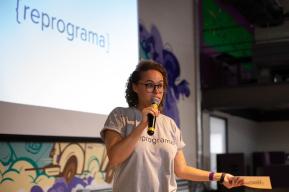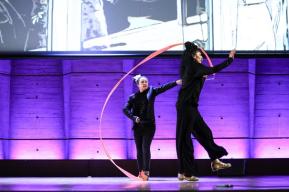News
Q&A: How inclusion in education has evolved

What is the Salamanca Statement on Inclusion in Education?
The Salamanca Statement on Inclusion in Education was adopted at the joint UNESCO and Ministry of Education of Spain World Conference on Special Needs Education held in Salamanca, Spain, in 1994. The Statement and its accompanying framework for action represent a worldwide consensus on future directions for the education of children with special needs. It is considered as having provided the impetus for inclusive education worldwide.
The Salamanca Statement emphasized the principle of inclusive education, which advocates for the education of all children, regardless of their physical, intellectual, social, emotional, linguistic, or other conditions, in schools. It called on governments to adopt inclusive policies and stressed the importance of adapting teaching methods, curricula and environments to accommodate the needs of all students. It highlighted the need for adequate training and support for teachers to enable them to address the diverse needs of students effectively and emphasized the importance of collaboration among governments, non-governmental organizations, communities and families to promote inclusive education.
What has happened since the adoption of this Statement?
Since the Salamanca Statement, efforts for inclusive education have continued. The Sustainable Development Goals adopted in 2015 and specifically Goal 4 recognizes the urgent need to provide equitable and inclusive quality education for all learners from the early years through compulsory schooling, technical and vocational education and training, higher education and lifelong learning. It calls on governments to step up efforts to achieve inclusion in education with special emphasis on the role of civil society and the involvement of marginalized groups. It was further highlighted at the United Nations Transforming Education Summit (TES) in 2022, which recalled the baseline of the Sustainable Development Goal – leave no one behind.
Many countries have enacted laws and policies to promote inclusive education. Of the 133 national commitments to transform education made by countries at the TES, 87% recognized the importance of ensuring more inclusive education systems that cater for the needs of the most vulnerable learners and communities.
Despite progress since the Salamanca Statement, deep disparities remain. Millions of children and youth are still denied their right to education. Over 7 million refugee children are not enrolled in school. Poverty, geographical location, gender, language, disability, ethnicity, migration or displacement status continue to dictate and limit education opportunities.
There has been a gradual shift in attitudes towards inclusion in education. More stakeholders, including educators, policymakers, parents and communities are recognizing the value of inclusive education in promoting diversity, equity and social cohesion. Data shows that when children have at least one sensory difficulty, they are less likely to complete primary school than children who have no sensory difficulties.
What are the positive trends to ensure inclusion in education?
There is growing emphasis on providing teachers with training and professional development opportunities to effectively support inclusive practices in the classroom. Educators are learning strategies for differentiating instruction, fostering inclusive classroom environments and collaborating with special education professionals and support staff. However, around 40% of countries still do not provide teacher training on inclusion.
The development and integration of assistive technologies have expanded opportunities for students with disabilities to access educational materials and participate in learning activities alongside their peers. Yet, laws in 25% of countries make provisions for educating children with disabilities in separate settings, rising to over 40% in Asia and in Latin America and the Caribbean.
There is increasing recognition of the intersectionality of identities and experiences among students. Inclusive education efforts are evolving to address the unique needs and challenges faced by students who belong to multiple marginalized groups, such as students with disabilities who are also from minority ethnic or linguistic backgrounds. In at least 20 countries, hardly any poor, rural young woman complete upper secondary school.
Overall, the evolution of inclusion in education since the Salamanca Statement and the adoption of the Sustainable Development Goals in 2015 reflect a growing commitment to creating equitable, diverse and inclusive learning environments where every learner matters, and matters equally. Barriers to inclusion include poor attitudes, inaccessible and unsafe learning environments, rigid curriculum, ineffective teacher training, lack of knowledge of the language of instruction, socio-economic barriers to education, and lack of political will and funding.
How is UNESCO supporting inclusion in education?
UNESCO plays a significant role in promoting inclusive education around the world through various initiatives, programmes and advocacy efforts. UNESCO supports governments to adopt inclusive education frameworks, provides technical assistance and builds capacity among governments, education stakeholders and institutions to develop inclusive education systems. The Global Education Monitoring Report’s SCOPE and VIEW databases track indicators related to access, participation, quality and equity in education, including the inclusion of marginalized and vulnerable populations.
More work remains to be done. UNESCO calls on governments and partners to support inclusive education by:
- Targeting financial support to disadvantaged groups and eliminate direct and indirect schools fees in basic education;
- providing programmes and avenues for re-entry into the education system, equivalency programmes, programmes for continuous learning and lifelong learning, both in formal and non-formal education systems;
- forging a holistic approach to education from early childhood onwards to incorporate the concerns of marginalized and excluded groups in all levels of education and in all areas of education;
- developing capacities for policy-making and system management to support strategies towards inclusive quality education; and
- undertaking research on inclusive policies and quality learning enhancement to build good practice based on the evidence of what works.
More information
- UNESCO inclusion in education
- Celebrating inclusion in education: 30th Anniversary of Salamanca Statement
- Celebrating inclusion in education: Global Inclusive Schools' Forum
- SDG4 mid-term progress review: progress since 2015 has been far too slow
- 2020 GEM Report on inclusion in education: All means All
- Regional Report on inclusion in education: 2020 Latin America and the Caribbean report
- Regional Report on inclusion in education: 2021 Central and Eastern Europe, Caucasus and Central Asia
- PEER country profiles on inclusion in education
- Right from the start: build inclusive societies through inclusive early childhood education
- How committed? Unlocking financing for equity in education
- Inclusive teaching: preparing all teachers to teach all students
- Access the SCOPE website
- Explore the VIEW website





